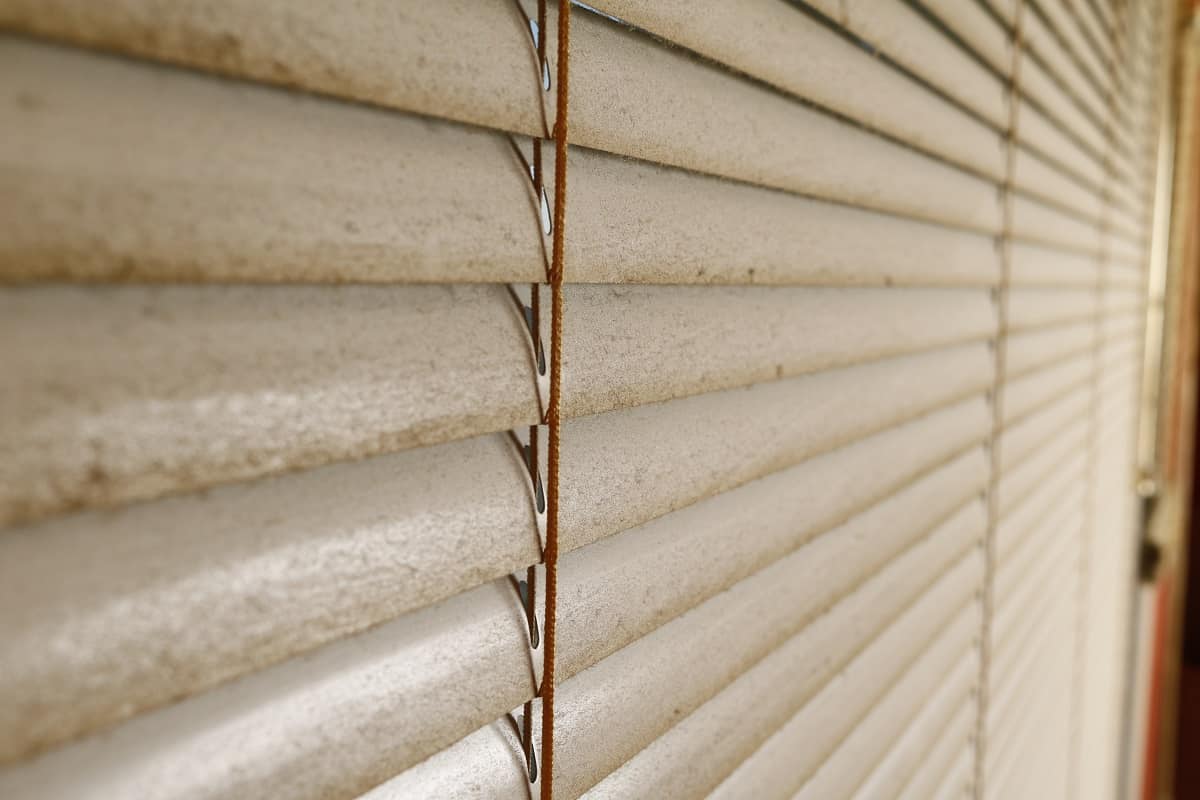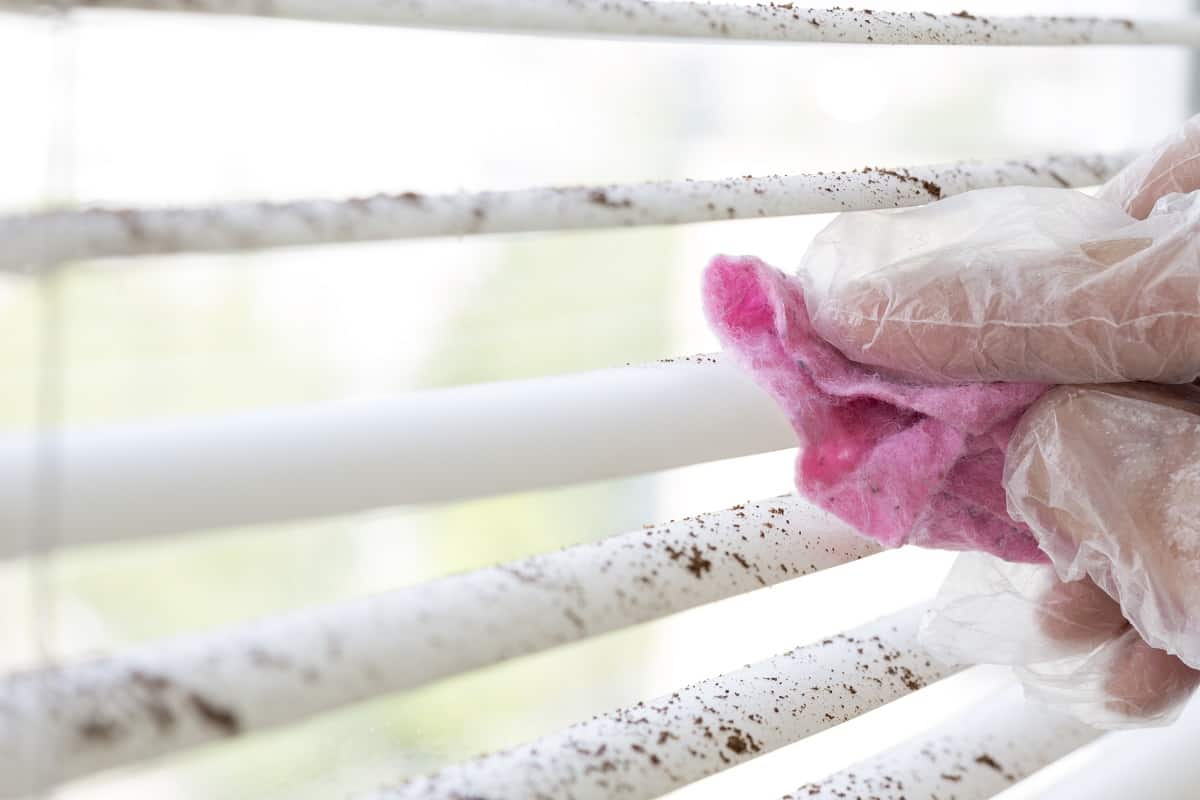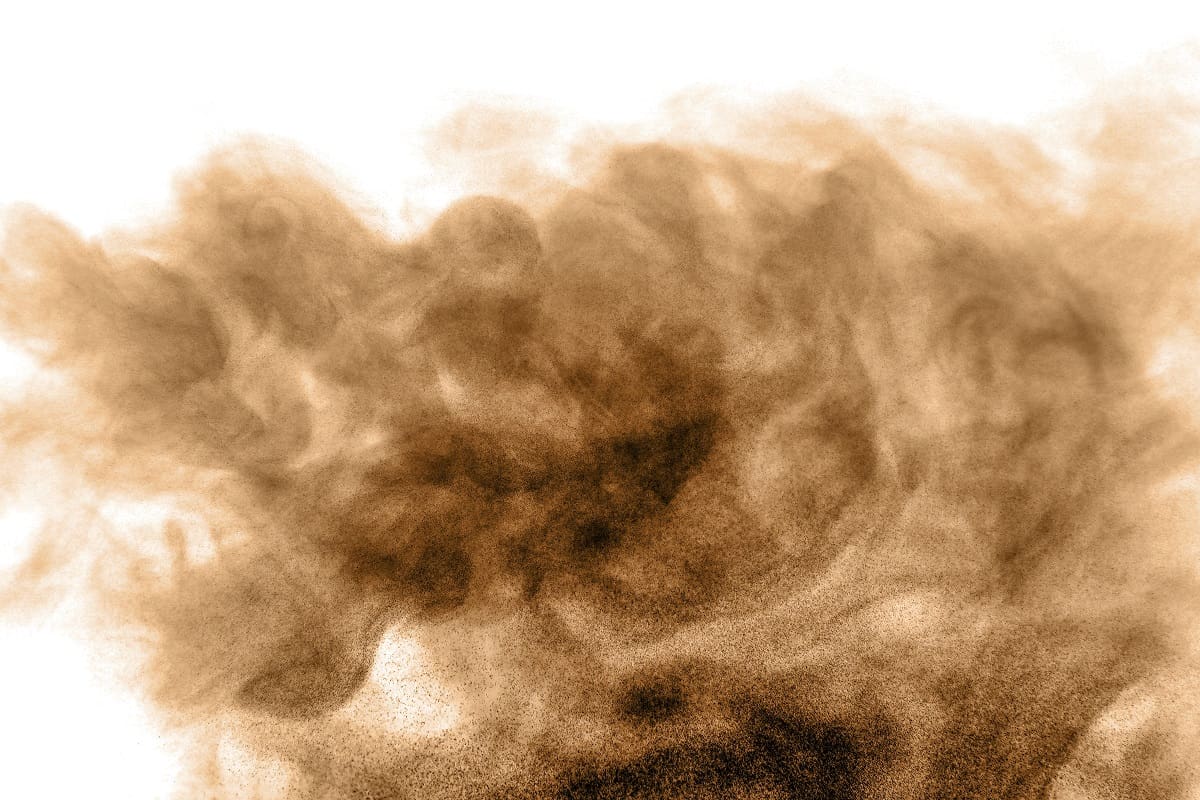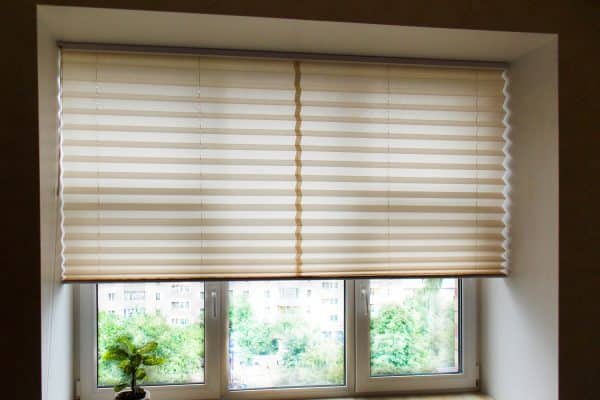It is natural for window blinds to change color over time due to several factors: UV light exposure, dust, or dirt, mildew, and aging. However, there could be a more serious reason for them to turn black. Read on since we have found out about the possible causes of why your blinds are turning black.
The most common reasons why your blinds turn black are dust and dirt, molds or mildew, and soot deposits. It is important to identify the specific cause since they all pose health hazards to varying degrees and must be dealt with immediately.
Blinds, walls, furniture, floors, and other home structures tend to blacken over time. There are several culprits why discoloration occurs and various ways how to prevent, remove, and handle the issue. Keep reading to learn the best methods to keep your blinds looking like new!

Reasons Blinds Turn Black
Black discoloration in blinds has several causes. This includes dust and dirt, mold and mildew, and soot.
Dust And Dirt
Blinds are a popular window treatment but they require regular care and maintenance to look their best. Your blinds could turn black because of accumulated dust and dirt.

Opening windows and doors allow all forms of particles to enter a room and cause dark splotches on furnishings and fixtures. Air ducts, vents, and other openings are natural conduits for dust and dirt especially if the filters are not well maintained.
Cleaning Dust And Dirt

All types of blinds benefit from regular dusting, vacuuming, or even hairdryer treatment. When using a vacuum cleaner, adjust it to the lowest setting to avoid deforming the slats, and use the coolest setting of a hairdryer for the same reason.
For heavier stains and dirt, a soft cloth dabbed with 75% water and 25% vinegar can be rubbed gently into each slat from one end to the other.
For exceptionally dirty blinds, you may have to remove them and soak them in a soap solution with a degreasing component.
Mold And Mildew

Mold and mildew are types of fungi that spread rapidly in moist environments. Typically, they are found in bathrooms, kitchens, attics, basements, and other areas that are relatively unlit and humid. Eventually, they could form on walls, furniture, curtains, and blinds.
Mold and mildew can certainly ruin the appearance of your household furnishings but more importantly, they pose health hazards when inhaled.
Fungal spores trigger asthma attacks and other respiratory problems that affect children and older individuals with compromised lungs. They exacerbate allergic reactions and cause breathing difficulties.
Cleaning Mold And Mildew
Soot stains on walls, blinds, and furniture can be mistaken for mildews. To identify mold from soot, simply dab a cloth or a paper towel with bleach and gently wipe it across the discolored surface.
If the discoloration is removed, then it is mildew, however, if it remains, the black particle is most likely soot.
Soot
Soot is a slightly sticky black or brown powder that is generally a byproduct of incomplete or improper combustion. Carbon particles are released into the air as a residue and come off as small black matter called soot.
These particles eventually gather together, adhering to blinds, ceilings, walls, furniture, and any other fixture inside your home.
There are numerous causes of soot such as candles, oil lamps, furnaces, stoves, and fireplaces. They are relatively responsible for emitting carbon particles that make up the accumulated deposits.

Candle Soot Removal
Inasmuch as candles are able to change a room’s ambiance, incomplete oil combustion fumes off into the air, leading to the presence of soot. Some particles are so minute or small that they hang in the air for several months.
Specific candles such as scented and wax and those that have multiple or wire-designed wicks produce the largest amount of soot. To prevent this build-up, you can use unscented, soy, or bee’s wax candles as alternatives.
You can either spray the chemical directly on the material or onto a microfiber cloth and then manually wipe it across the surface. It is not necessary to wash the blinds after wiping them.
Check out STANLEY Original Degreaser on Amazon.
Use a hardwood floor cleaner to remove soot on wooden blinds, and use a grease cleaning substance to remove particles on plastic, vinyl, and metal window treatments.
Check out Aunt Fannie’s Hardwood Floor Cleaner on Amazon.
Reducing Oil Lamp Soot
The chemical burnt to light oil lamps produces carbon monoxide, a colorless and odorless gas that is toxic to humans. When used for prolonged periods, small amounts of CO are introduced into the environment.
To lessen carbon residues, simply adjust the wick, avoid using scented oils, and place the material in areas where it would not be exposed to sunlight.
Reducing Fireplace Soot
The fireplace may be the cause of soot accumulation during the cold season. The situation occurs due to the improper positioning of the logs and a dirty burner port. Improper wood stacking or placement may block or obstruct the flame from completely burning.
In a gas fireplace, a clogged or dirty burner port may impede proper and complete combustion, resulting in the residue’s accumulation.
To prevent soot formation, avoid over-stockpiling the wood, and always clean the burner.
Reducing Stovetop Soot
The kitchen is the most common area where soot accumulates because of the smoke deposits when cooking. The problem is similar to a gas fireplace—it lies within a clogged burner port.
Reducing And Safeguarding Against Furnace Soot
All heating implements such as furnaces, fireplaces, and stoves produce soot as a byproduct of the combustion process. A burner that generates a blue flame is a sign of full combustion while a yellow flame entails otherwise.
Poorly maintained filters in households that have furnaces are prone to eventual soot formation and build-up. This heating appliance can produce more black particles since it is continuously operating.
So it is important to address the issue at hand since the accumulation of this matter can pose such a serious health threat.
A carbon monoxide detector is a must in every household because it detects and measures CO content.
Check out Kidde Smoke And Carbon Monoxide Detector on Amazon.
Always check the pilot light. A yellow light is an indicator that the fuel or gas in your furnace is not burning properly or completely. It serves as a warning sign that there is a CO leak in your house. To confirm, check for a formation of soot around the furnace, blinds, and walls.
Replace or clean the burners yearly, particularly before the winter season in order to keep your furnace fully functioning and reduce soot formation.
Is Soot Dangerous?
Soot is an air pollutant mainly composed of carbon monoxide that is dangerous to our health. It is too small or minute that it can enter the body through the skin, eyes, ingestion, and inhalation. Once inside the body, CO particles can cause asthma, heart disease, and other breathing-related conditions.
In the US alone, it has been recorded that thousands of people are affected every year due to prolonged exposure to soot. Studies have shown that it generally causes 300,000 asthma attacks yearly.
The elders, infants, and those that have breathing issues are the most common people who are easily affected. That said, it is ideal to address the issue at hand to ensure your and your family’s safety.
What Blinds Are The Easiest To Clean?
Vertical and roller blinds are among the easiest blinds to clean. Since the individual slats of the former are vertical, dust and dirt do not accumulate, instead falling directly on the ground.
This type of window cover is either made from PVC or fabric which you can clean by occasionally dusting or vacuuming the materials.
Roller blinds also need to be vacuumed every few weeks to keep them looking their best. As an alternative, you can also wipe the fabric using a microfiber cloth.
Can You Paint Blinds?
Blinds, particularly those made of wood and vinyl, can be painted to regain their beauty and aesthetic appeal. Ensure that the slats can be removed from the cords easily.
Before starting to paint your window treatments, remember to clean the material first using dish soap and warm water.
In Closing
Discoloration in blinds may have several causes. Formulation of black particles, however, could be toxic and harmful to your health. Whatever the cause, it has to be dealt with immediately. We hope this article has helped you with understanding the reasons why your window treatments are gradually turning black.




![Stylish living room interior with comfortable sofa near window, Can Blinds Between Glass Be Repaired [Inc. Broken String, Changing Snap-In, And Uneven Blinds]?](https://housepursuits.com/wp-content/uploads/2022/10/Stylish-living-room-interior-with-comfortable-sofa-near-window-600x400.jpg)

